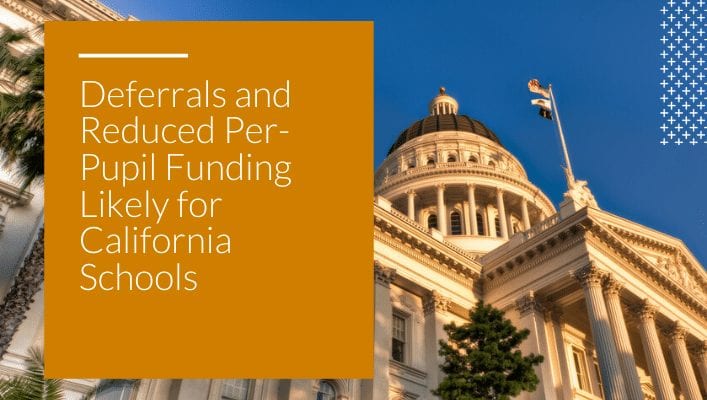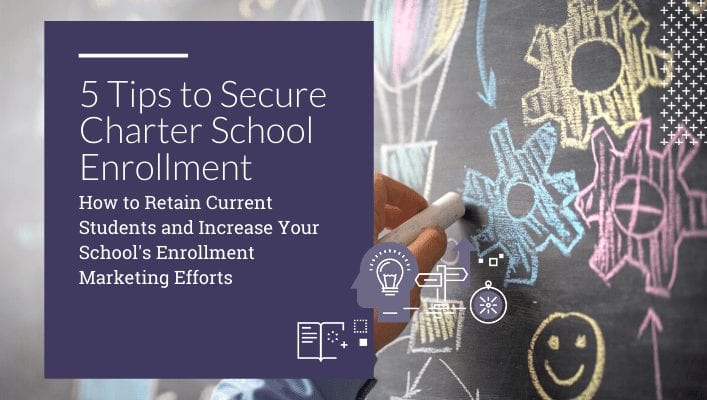As charter schools across the country confront the challenges related to the Coronavirus (COVID-19), the U.S. Department of Education pulled together a list of COVID-19 resources that can guide your school’s response. We’ve provided the list of resources below. You’ll also find resources for parents seeking educational activities for their children too.
CDC Guidelines for Schools
Additional Resources for Elementary and Secondary Schools
- Fact Sheet: Addressing the Risk of COVID-19 While Serving Migratory Children (May 11, 2020)
- Information on Formula Grants for the Outlying Areas authorized by the CARES Act (May 5, 2020)
- Fact Sheet for Transferring State-and Local-Level Funds under Section 5103 of the ESEA (April 29, 2020)
- Fact Sheet for Repurposing Federal Equipment and Supplies to Combat COVID-19 (April 29, 2020)
- Information on Education Stabilization Fund Discretionary Grants (April 27, 2020)
- Information on Elementary and Secondary School Education Relief Fund authorized by the CARES Act (April 23, 2020)
- CTE and Adult Education Fiscal Waiver Invitation Letter and Optional Template for SEAs (April 17, 2020)
- Information on Governor’s Emergency Education Relief (GEER) fund authorized by the CARES Act (April 14, 2020)
- The US Department of Education’s website for the Education Stabilization Fund (April 13, 2020)
- Invitation to Waiver of Fiscal Requirements Due to COVID-19 for the 2019-2020 School Year (April 3, 2020)
- Optional State Template for Waiver From Fiscal Requirements Due to COVID-19 for the 2019-2020 School Year (April 3, 2020)
- Environmental Cleaning and Disinfection Recommendations: Interim Recommendations for US Community Facilities with Suspected/Confirmed Coronavirus Disease (updated April 1, 2020)
- Supplemental Fact Sheet (Español) Addressing Serving Children with Disabilities during COVID-19 national emergency (March 21, 2020)
- Broad flexibilities provided to states to bypass ESSA mandated testing for the 2019-2020 school year due to COVID-19 national emergency. States education leaders can find the waiver application here. (March 20, 2020)
- Fact Sheet: Addressing the Risk of COVID-19 in Schools While Protecting the Civil Rights of Students [PDF, 385KB] (Español) (March 16, 2020)
- OCR Short Webinar on Online Education and Website Accessibility Webinar (Length: 00:07:08) (March 16, 2020)
- CDC guidance on Considerations for School Closures (March 13, 2020)
- Protecting Student Privacy: FERPA and the Coronavirus (Español) (March 12, 2020)
- Questions and Answers on Providing Services to Children with Disabilities During the COVID-19 Outbreak (March 12, 2020)
- Fact Sheet: Impact of COVID-19 on Assessments and Accountability under the Elementary and Secondary Education Act (March 12, 2020)
- CDC Interim Guidance for Administrators of US K-12 Schools and Childcare Programs: Plan, Prepare, and Respond to Coronavirus Disease 2019 (COVID-19) (updated March 12, 2020)
Other Languages: Español | 中文 - The Readiness Emergency Management for Schools (REMS) Technical Assistance (TA) Center website, https://rems.ed.gov/Resources_Hazards_Threats_Biological_Hazards.aspx, has useful information, resources, trainings, and tools for addressing infectious diseases, related topics, and protecting the school community.
- The USDA released new information on flexibilities that will allow students to access meal service during school closures. (March 10, 2020)
- The Office for Civil Rights issued a Letter to Education Leaders on Preventing and Addressing potential discrimination associated with COVID-19. (March 4, 2020)
Other Languages: En español (Spanish) PDF (66K) | العربيّة (Arabic) PDF (656.2K) | 情况说明书 (Sim. Chinese) PDF (120K) | 情況說明書 (Trad. Chinese) PDF (208K) | 한국어 | (Korean) PDF (166K) | Tagalog (Tagalog) PDF (65K) | Việt-ngữ (Vietnamese) PDF (135K)
Additional Resources
- RSA COVID-19 Questions & Answers: Administration of the VR Services, AIVRS, and Randolph-Sheppard Programs (May 14, 2020)
- RSA COVID-19 Questions & Answers: Fiscal Management of the VR Program (April 29, 2020)
- U.S. Department of Education CARES Act Waiver Report to Congress (April 27, 2020)
- AEFLA and COVID-19 FAQs, Part 2 (April 17, 2020)
- Donation or Loan of Personal Protective Equipment and Other Medical Supplies and Equipment Purchased with Federal Funds (April 14, 2020)
- Perkins V State Plans and COVID-19 – Frequently Asked Questions Round 2 (April 13, 2020)
- Questions & Answers on the use of Department of Education grant funds during COVID-19 national emergency (April 8, 2020)
- Frequently asked questions (FAQs) about COVID-19 for Institute of Education Sciences (IES) grantees
- Perkins V State Plans and COVID-19 – Frequently Asked Questions (March 31, 2020)
- Adult Education and Family Literacy Act and COVID-19 – Frequently Asked Questions (March 27, 2020)
- WIOA Performance Accountability Provisions and COVID-19 – Frequently Asked Questions (March 26, 2020)
At-Home Activities
Please note that the materials presented below concerning resources available on a number of Federal agencies’ websites are being provided for your convenience as a potential resource for parents, students, schools, teachers, and other educators to use during this challenging time. They were not developed by the U.S. Department of Education, and we do not control or guarantee the accuracy, relevance, timeliness, or completeness of this information. Furthermore, the inclusion of any hyperlinks and the content presented is not intended to convey their relative importance, nor is it intended to endorse any views expressed or products or services offered. The Department does not control, direct, or encourage any particular curriculum or the information related to the curriculum. The use of materials or information by a school or educator is strictly a State and local matter.
Department of Defense: Learn about careers in STEM fields
Department of Education National Center for Education Statistics: Kids’ Zone
Department of Energy: Games and Activities; Virtual Field Trips to National Energy Labs
Environmental Protection Agency: Games, Quizzes, and Videos about the Environment
The Library of Congress: Presentations and Activities to Help Students Learn about History
NASA: Interactive Lessons about Space, Earth, Solar System and Universe; Lessons from Astronauts about Living in Space; STEM Activities for Students of All Ages
The Kennedy Center: Lunch Doodles with Mo Willems; Tour the Kennedy Center with The Pigeon
The Smithsonian: Free Smithsonian STEM Games and Simulations; Meet the Animals of the National Zoo; 3D Exhibits and Virtual Tours; Smithsonian Magazine Ten Museums You Can Virtually Visit; The Museum of Natural History Virtual Tour; Digital Smithsonian American Art Museum; Distance Learning Resources
NOAA: Use Real-Time Ocean Data to Explore the Environment
USGS: Learn from Home About Physical science, Geography and Maps
Schools should continue promoting everyday disease prevention strategies:
- If you are sick, stay home from school.
- Avoid close contact with those who are already sick.
- Cover your nose and mouth when coughing or sneezing with a tissue or the crook of your arm.
- Wash your hands often with soap and water.
- Avoid touching eyes, nose, or mouth.
- Consult this web page for further guidance from the U.S. Department of Education.
Schools can share relevant CDC fact sheets to help students, families, and staff understand COVID-19 along with steps they can take to protect themselves:
- What to do if you are sick
- Stop the spread of germs – help prevent the spread of respiratory viruses like COVID-19
The Department of Education regularly updates its list of resources and information. They’ve also encouraged school leaders to send questions on which the Department can be helpful to the following email address: COVID-19@ed.gov.


